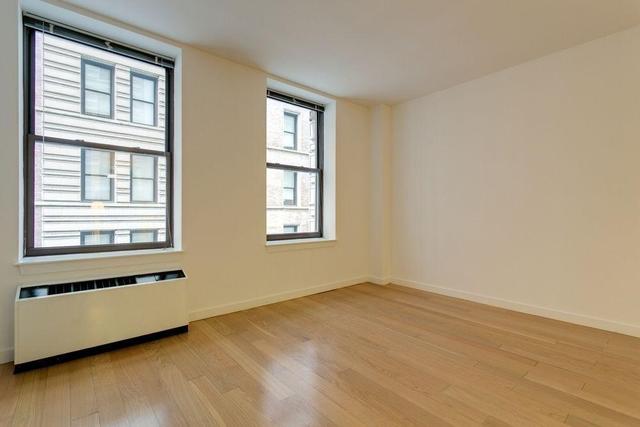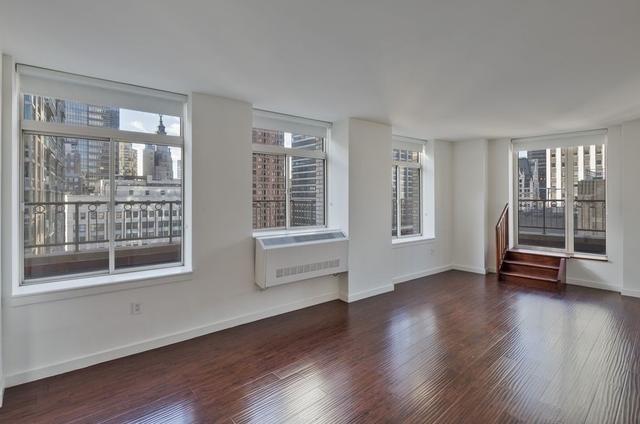
How to Flip Houses With No Money
By: ROS Team
House flipping, the popular practice of purchasing properties, renovating them, and selling them at a higher price for profit, has gained immense popularity within the real estate industry.
However, there is a prevalent misconception in the realm of house flipping that a significant amount of money is required to begin the endeavor.
In this guide, we will debunk that myth and explore how to flip houses with no money.
What Is House Flipping?
House flipping refers to the practice of purchasing a property, typically in a distressed condition, with the intention of renovating and reselling it for a profit. The goal is to buy low, invest in strategic renovations, and sell high within a relatively short period.
Top Ways For Flipping Houses With No Money
1) Building Your Knowledge and Network
– Educate Yourself about Real Estate and House Flipping
Invest time in learning about real estate fundamentals, market trends, financing options, renovation strategies, and legal aspects of house flipping.
Read books, attend seminars, take online courses, and participate in workshops to gain knowledge from experienced professionals in the field. Stay up to date with industry news and trends to make informed decisions.
– Network within the Real Estate Industry
Networking is a powerful tool for building connections and finding opportunities in the real estate industry. Attend local real estate investment groups, join online forums and social media communities, and participate in industry events.
Engage with other investors, flippers, real estate agents, contractors, and lenders. Networking can provide valuable insights, partnerships, and potential funding sources for your house-flipping ventures.
– Find Mentors or Experienced Flippers
Seek out experienced house flippers who can serve as mentors and provide guidance throughout your journey.
Look for individuals who have successfully flipped houses with little to no money and are willing to share their knowledge. Their expertise can help you navigate challenges, avoid costly mistakes, and accelerate your learning curve.
– Utilize Online Resources and Forums
Take advantage of online resources and forums dedicated to real estate investing and house flipping.
Websites, blogs, podcasts, and online communities offer a wealth of information, tips, and case studies from industry experts.
Engage in discussions, ask questions, and share your experiences to learn from others and expand your network.
2) Creative Financing Options
– Leveraging Other People’s Money (OPM)
Utilize other people’s money to fund your house-flipping projects. This can involve partnering with investors who provide the capital in exchange for a share of the profits.
You can also consider borrowing money from friends, family, or private lenders who are willing to invest in your ventures.
– Partnering with Investors or Private Lenders
Seek out investors or private lenders who are interested in real estate opportunities. Present your house-flipping business plan and demonstrate the potential for profit.
Negotiate mutually beneficial terms, such as profit-sharing agreements or interest payments, to secure the necessary funds for your projects.
– Exploring Government Programs and Grants
Investigate government programs or grants aimed at promoting housing rehabilitation or urban revitalization.
These programs may offer financial assistance, tax incentives, or low-interest loans specifically for renovating distressed properties. Research local, state, and federal initiatives that could support your house-flipping endeavors.
– Utilizing Seller Financing or Lease Options
Consider negotiating seller financing with motivated sellers. This involves arranging an agreement with the property owner, where they finance a portion or all of the purchase price.
Lease options provide another avenue where you lease the property with an option to buy it at a later date, allowing you to generate income while saving up for the purchase.
– Crowdfunding Platforms
Leverage the power of crowdfunding platforms that cater specifically to real estate projects. These platforms allow you to present your house-flipping project to a wide audience of potential investors who can contribute smaller amounts of money. In return, they receive a share of the profits once the property is sold.
3) Developing Strategic Partnerships
– Building Relationships with Contractors and Tradespeople
Establish strong relationships with reliable contractors, tradespeople, and construction professionals. These partners can provide quality workmanship, competitive pricing, and timely completion of renovations.
Look for experienced professionals who understand the unique demands of house flipping and can work within your budget constraints.
– Collaborating with Real Estate Agents and Brokers
Connect with real estate agents and brokers who specialize in distressed properties or have experience with house flipping. They can help you identify potential properties, negotiate favorable deals, and provide market insights.
A skilled agent can be a valuable partner in finding profitable opportunities and maximizing your returns.
– Establishing Connections with Property Inspectors and Appraisers
Develop relationships with property inspectors and appraisers to ensure thorough evaluations of potential flip properties. Their expertise can help you identify hidden issues, estimate renovation costs accurately, and determine the after-repair value (ARV). Reliable inspections and appraisals are essential for making informed decisions and avoiding costly surprises.
– Leveraging the Expertise of Architects and Interior Designers
Collaborate with architects and interior designers to optimize the layout and aesthetics of your flip properties. They can help you create appealing designs that attract buyers and increase the property’s market value.
Their guidance can also ensure compliance with building codes and regulations, enhancing the overall quality of your renovations.
4) Negotiating Deals and Contracts
– Research and Preparation
Before entering negotiations, thoroughly research the property, its market value, and comparable sales in the area. Understand the seller’s motivations and any potential issues with the property.
Come prepared with a clear understanding of your budget, renovation plans, and desired terms. This knowledge will empower you during negotiations.
– Start with a Competitive Offer
Make a competitive yet reasonable offer based on your research. Consider the property’s condition, renovation costs, and potential market value.
Present your offer in a professional and persuasive manner, highlighting the benefits to the seller, such as a quick closing or flexibility in the terms. Be prepared to negotiate and find a mutually beneficial agreement.
– Structure Creative Financing Deals
When starting with no money, creative financing options are crucial. Negotiate terms with sellers, investors, or lenders that align with your financial situation. This can include seller financing, lease options, profit-sharing agreements, or equity partnerships.
Craft agreements that allow you to secure the property and fund the renovations while mitigating risk.
– Draft Solid Contracts
Contracts are essential to protect your interests and ensure a smooth transaction. Consider consulting with a real estate attorney to draft or review contracts to ensure they align with local laws and adequately protect your rights.
Key elements to include are purchase price, financing terms, contingencies, repair allowances, and closing timelines.
– Avoid Common Pitfalls
Be aware of common negotiation pitfalls and avoid them. Don’t let emotions drive your decisions or rush into deals that don’t align with your goals.
Maintain open communication, listen actively, and seek win-win solutions whenever possible. Be prepared to walk away from deals that don’t meet your criteria or present too much risk.
5) Maximizing Renovation Efficiency and Cost-Effectiveness
– Create a Detailed Renovation Plan
Before starting any renovations, create a comprehensive plan outlining the scope of work for each property area.
Identify the essential repairs and upgrades needed to enhance the property’s value. A detailed plan will help you stay organized, prioritize tasks, and avoid unnecessary expenses.
– Prioritize Repairs and Renovations
Focus on repairs and renovations that have the most significant impact on the property’s value and marketability. Address structural and safety issues first, followed by cosmetic improvements that provide the most return on investment.
Consider factors such as the target market, local market trends, and buyer preferences when prioritizing renovations.
– Find Affordable Materials and Labor
Look for cost-effective solutions when sourcing materials and labor. Compare prices from different suppliers and contractors to find the best deals. Consider purchasing materials in bulk or exploring discounts from local suppliers.
Additionally, build relationships with reliable contractors who offer competitive pricing without compromising quality.
– Consider DIY and Sweat Equity
If you have the necessary skills and expertise, consider tackling certain renovations yourself. DIY projects and sweat equity can significantly reduce labor costs.
However, be realistic about your abilities and be cautious not to compromise quality. For complex tasks or specialized trades, it’s best to hire professionals.
– Embrace Energy Efficiency
Incorporate energy-efficient upgrades into your renovations. Installing energy-efficient appliances, LED lighting, and insulation can attract buyers and reduce long-term operating costs.
These upgrades not only enhance the property’s value but also align with sustainability trends in the real estate market.
6) Wholesaling
Wholesaling is another approach you can consider when flipping houses with no money. Wholesaling involves finding discounted properties and assigning the purchase contract to another buyer for a fee without actually taking ownership or making any renovations.
Here’s how wholesaling works:
– Finding Distressed Properties:
Similar to traditional house flipping, you’ll need to search for distressed properties that have the potential for profit. Look for motivated sellers who may be willing to sell their properties at a discount due to financial difficulties, foreclosure, or other reasons.
Networking with real estate agents, attending auctions, and scouring online listings can help you find these opportunities.
– Negotiating Purchase Contracts:
Once you identify a distressed property, negotiate a purchase contract with the seller. The key is to secure the property at a significantly discounted price.
Due diligence is crucial to accurately assess the property’s value and determine a suitable purchase price that allows room for profit.
– Assigning the Contract:
Instead of actually buying the property, you’ll assign the purchase contract to another buyer, typically an investor or house flipper.
This means you transfer your rights and obligations under the contract to the buyer in exchange for an assignment fee. The fee is typically a percentage of the property’s sale price or a fixed amount agreed upon with the buyer.
– Building a Network of Buyers:
To effectively wholesale properties, it’s important to cultivate a network of investors and house flippers who are actively seeking opportunities. Attend local real estate investor meetings, join online forums, and connect with other professionals in the industry.
Build relationships with potential buyers who have the resources and interest in acquiring distressed properties.
– Efficient Marketing and Deal Presentation:
To attract potential buyers, market the wholesale deals effectively. Develop a compelling deal package that includes property details, estimated repairs, comparables, and the assignment fee. Use online platforms, email marketing, and networking to showcase the opportunity to your buyer network.
– Closing the Transaction:
When a buyer expresses interest in the deal, coordinate with the title company or closing attorney to complete the transaction.
The buyer will typically assume responsibility for funding the purchase and closing costs. Once the sale is finalized, you receive your assignment fee, and the buyer takes over the property.
How Much Money Do I Need To Start Flipping Houses?
The rough amount range to start flipping houses can vary widely, but typically you should have access to at least $10,000 to $50,000 or more.
What Is The 70% Rule In House Flipping?
The 70% rule is a guideline commonly used in house flipping to determine the maximum purchase price of a property based on its after-repair value (ARV). According to this rule, a house flipper should not pay more than 70% of the ARV minus the estimated repair costs.
For example, if the ARV of a property is estimated to be $200,000 and the estimated repair costs are $30,000, the maximum purchase price based on the 70% rule would be $130,000 ($200,000 – $30,000 = $170,000 * 0.7 = $130,000).
What Is Illegal House Flipping?
Illegal house flipping refers to engaging in fraudulent or deceptive practices during the process of buying, renovating, and reselling properties for profit. Here are some examples of activities that can be considered illegal in the context of house flipping:
1. Property Fraud:
This involves misrepresenting information about the property, such as its condition, value, or ownership history, with the intent to deceive buyers or lenders. It may include falsifying documents, hiding defects, or inflating the property’s value.
2. Predatory Lending:
Engaging in predatory lending practices, such as offering loans with exorbitant interest rates, hidden fees, or unfair terms, can be illegal. This targets vulnerable buyers or investors who may not fully understand the terms or are unable to repay the loans.
3. Straw Buyers:
Using straw buyers, who are individuals who falsely represent themselves as the buyers of a property, to obtain financing or manipulate the transaction is illegal. This scheme is often used to deceive lenders or inflate property values.
4. Mortgage Fraud:
Committing mortgage fraud involves providing false or misleading information on loan applications to secure financing. This can include inflating income, misrepresenting assets, or concealing debts. Mortgage fraud can also involve collusion with appraisers or other parties to manipulate property values.
5. Illegal Flipping Schemes:
Certain schemes involve orchestrating a series of fraudulent transactions to artificially inflate property values and deceive lenders or investors. This may include using false appraisals, phantom renovations, or undisclosed kickbacks to create the illusion of a profitable flip.
How Can I Flip My House With Bad Credit?
To flip a house with bad credit, consider the following strategies:
1. Partner with an Investor:
Seek out an investor or partner with good credit who can help secure financing for the project. They can assist with obtaining loans or qualifying for favorable terms while you contribute your expertise and efforts to the flip.
2. Explore Hard Money Loans:
Hard money lenders are less concerned with credit scores and more focused on the property’s value. These loans are typically short-term and have higher interest rates, but they can provide the necessary funding for the flip.
3. Use Seller Financing:
Negotiate with the seller to arrange seller financing, where they act as the lender. This allows you to make payments directly to the seller instead of relying on traditional lenders.
4. Build a Joint Venture:
Form a partnership with someone who has good credit and access to financing. Pool your resources and skills to share the risks and rewards of the house-flipping project.
5. Focus on Wholesaling:
Instead of traditional house flipping, consider wholesaling. This involves finding discounted properties and assigning the contracts to other buyers for a fee, eliminating the need for financing or renovations.
Flip Houses Without Money: Conclusion
Flipping houses with no money is not only a possibility but also an opportunity to enter the lucrative world of real estate investing. By leveraging the strategies mentioned above, you can overcome the financial barriers that may have seemed insurmountable. Remember to educate yourself, continuously expand your knowledge, and stay up to date with market trends.
Related Article:
Flipping a House
Pros & Cons of House Flipping
How to Successfully Flip Mobile Homes
Flip Tax in NYC
Everything You Should Know About Flip Leases








